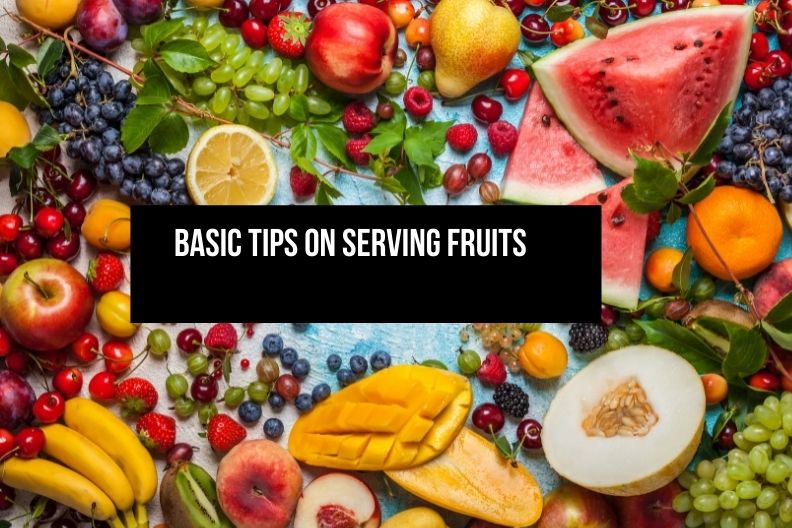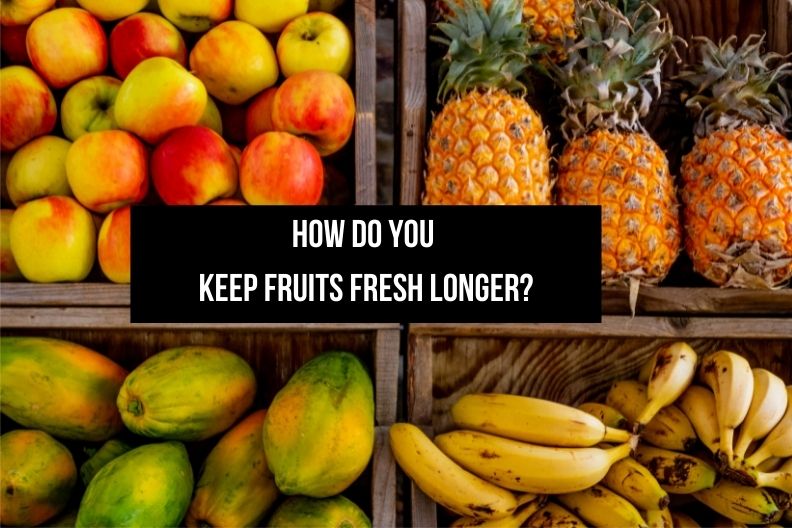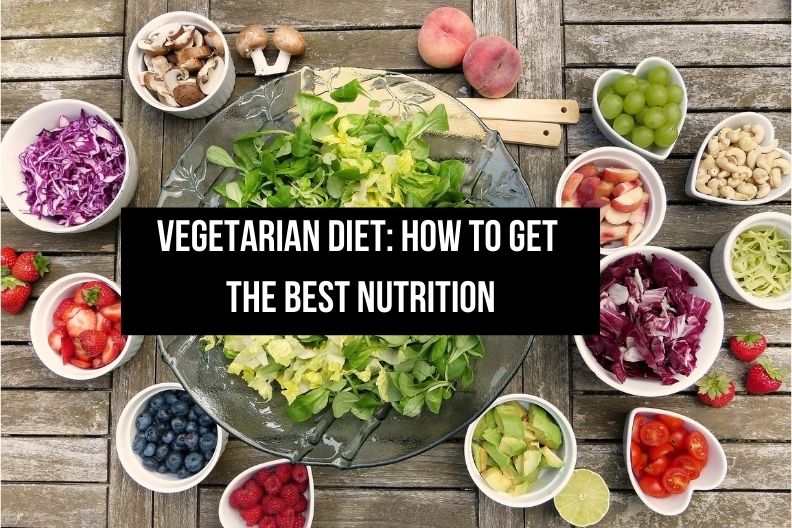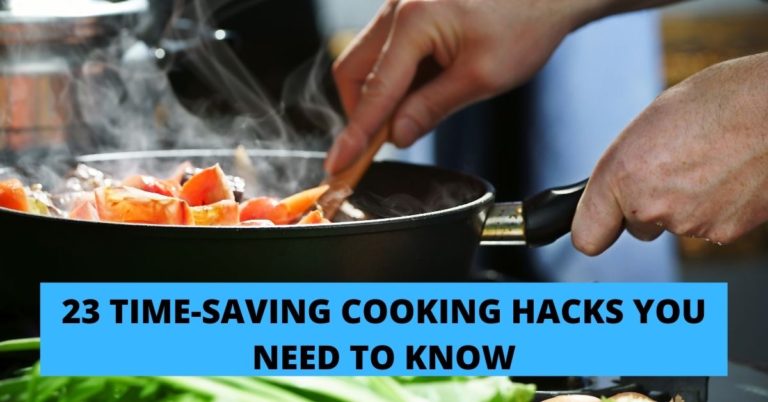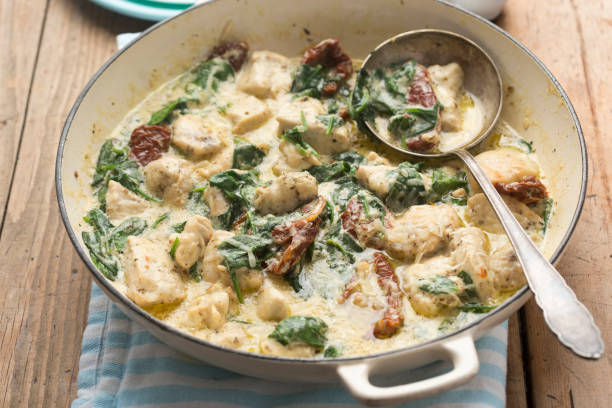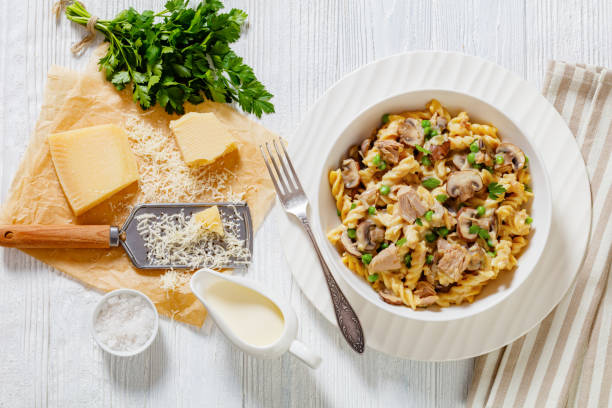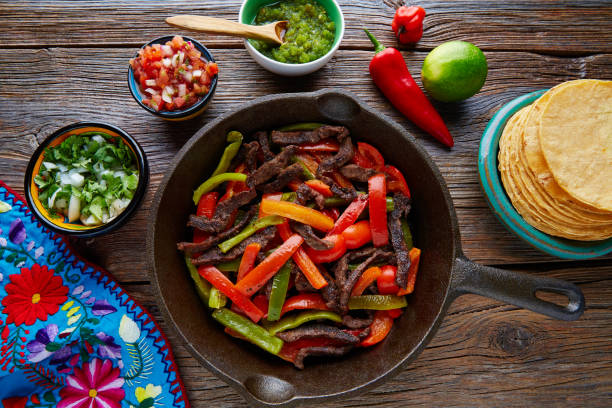What is the Healthiest Way to Cook Fruit?
Perfectly ripe fruit is, as a rule, more desirable used fresh than in any other way. However, fruits that are immature, require cooking. Stewing and baking are the simplest methods of preparation.
Table of Contents
General Suggestions for Cooking Fruit
The utensils for stewing should be porcelain-lined or graniteware. Fruit cooked in tin loses much of its delicate flavor; while if it be acid, and the tin of poor quality, there is always danger that the acid of the fruit acting upon the metal will form a poisonous compound. Cover with a china plate or granite-ware cover, never with a tin one, as the steam will condense and run down into the kettle, discoloring the contents. Use only silver knives for preparing the fruit, and silver or wooden spoons for stirring.
Prepare just before cooking, if you would preserve the fruit perfect in flavor, and unimpaired by discoloration. In preparing apples, pears, and quinces for stewing, it is better to divide the fruit into halves or quarters before paring. The fruit is more easily handled, can be pared thinner, and cored more quickly. Peaches, apricots, and plums, if divided and stoned before paring, can be much more easily kept whole.
Cook in a small quantity of boiling water, and if the economy is a point to be considered, do not add sugar until the fruit is done. Sugar boiled with an acid will be converted into glucose, two and one-half pounds of which only equal one pound of cane sugar in sweetening properties. It will require a much larger amount of sugar to sweeten fruit if added before the cooking process is completed.
Fruit should be cooked by stewing, or by gentle simmering; hard-boiling will destroy the fine flavor of all fruits, and especially of berries and other small fruits. Cinnamon, cloves, or other spices, should not be added, as their stronger flavors deaden or obliterate the natural flavor, which should always be preserved as perfectly as possible. If desirable to add some foreign flavor, let it be the flavor of another fruit or the perfume of flowers. For Instance, flavor apple with lemon, pineapple, quince, or rose water.
The unripe fruit is improved by making the cooking quite lengthy, which acts in the place of the ripening process, changing the starchy matter to saccharine elements. In cooking fruit, try to preserve its natural form. The more nearly whole it is, the better it looks, and the more natural will be its flavor.
Apples are best cooked by baking. Pears and quinces are also excellently baked. The oven should be only moderately hot; if the heat is too great, they brown on the outside before they are done throughout. In cooking fruit by any method, pains should be taken to cook together such as are of the same variety, size, and degree of hardness; if it is to be cut in pieces, care should be taken to have the pieces of uniform size.
Cooking Fruit Recipes
Baked Apples
Moderately tart apples or very juicy sweet ones are best for baking. Select ripe apples, free from imperfections, and of nearly equal size. Wipe carefully and remove the blossom ends. Water sufficient to cover the bottom of the baking dish should be added if the fruit is not very juicy. If the apples are sour and quite firm, a good way is to pare them before baking, and then place them in an earthen pie dish with a little hot water. If they incline to brown too quickly, cover the tops with a granite-ware pie dish. If the syrup dries out, add a little more hot water.
When done, set them away till nearly cold, then transfer to a glass dish, pour the syrup, which should be thick and amber-colored, over them. Sour apples are excellent pared, cored, and baked with the centers filled with sugar, jelly, or a mixture of chopped raisins and dates. They should be put into a shallow earthen dish with water sufficient to cover the bottom, and baked in a quick oven, basting often with the syrup. Sweet apples are best baked without paring. Baked apples are usually served as a relish, but with a dressing of cream, they make a most delicious dessert.
Citron Apples
Select a few tart apples of the same degree of hardness, and remove the cores. Unless the skins are very tender, it is better to pare them. Fill the cavities with sugar, first placing in each apple a few bits of chopped citron. If the skins have been removed, place the stuffed apples on a flat earthen dish with a tablespoonful of water on the bottom; cover closely, and bake till perfectly tender, but not till they have fallen to pieces. If the skins are left on, they may be baked without covering. When cold, serve in separate dishes, with or without a spoonful or two of whipped cream on each apple.
Lemon Apples
Prepare tart apples the same as citron apples. Fill the cavities made by removing the cores with a mixture of grated lemon and sugar, squeeze a few drops of lemon juice over each apple, and bake. Serve with or without whipped cream.
Baked Pears
Hard pears make an excellent dessert when baked. Pare, halve, remove seeds, and place in a shallow earthen dish, with a cup of water to every two quarts of fruit. If the pears are sour, a little sugar may be added. Bake, closely covered, in a moderate oven until tender. Serve with sugar and cream. Tart pears are the best for baking, as the sweet varieties are often tasteless.
Baked Quinces
Pare and remove the cores. Fill the cavities with sugar, put in a shallow earthen dish, and add water to cover the bottom; bake till soft, basting often with the syrup. If the syrup dries out before the fruit is perfectly tender, add a little more hot water.
Pippins and Quince
Pare and quarter nice golden pippins, and cook in boiling water until reduced to a jelly. Add two or three quinces sliced, and simmer slowly in the jelly until the quince is tender. Add sugar to taste. Serve cold.
Baked Apple Sauce
Pare, core, and quarter apples to fill an earthen crock or deep pudding dish, taking care to use apples of the same degree of hardness, and pieces of the same size. For two quarts of fruit thus prepared, add a cup of water, and if the apples are sour, a cup of sugar. Cover closely, and bake in a moderate oven for several hours, or until of a dark red color.
Sweet apples and quinces in the proportion of two parts of apple to one of quince, baked in this way, are also good. Cut the apples into quarters, but slice the quinces much thinner, as they are more difficult to cook. Put a layer of quince on the bottom of the dish, alternating with a layer of apple, until the dish is full. Add cold water to half cover the fruit, and stew in the oven well covered, without stirring, until tender.
Pears may be cooked in a similar way, and both apples and pears thus cooked may be canned while hot and kept for a long period.
Baked Apple Sauce No. 2
Prepare nice tart apples as for No. 1. Bake, with a small quantity of water, in a covered pudding dish, in a moderate oven, until soft. Mash with a spoon, add sugar, and when cold, a little grated orange rind.
Apples Stewed Whole
Take six large red apples, wash carefully, and put in a fruited kettle with just enough boiling water to cover. Cover the kettle, and cook slowly until the apples are soft, with the skins broken and the juice a rich red color. After removing the apples, boil the juice to a syrup, sweeten, and pour over the apples.
Steamed Apples
Select pound sweets of uniform size, wipe, cut out the blossom-ends, and pack in a large pudding dish. Pour in a cupful of water, cover the dish closely, set in a moderate oven, and steam till the apples are tender. Remove from the dish, and pour the liquor over them frequently as they cool.
Compote of Apples
Pare and extract the cores from moderately tart, juicy apples. Place them in a deep pudding dish with just enough water to cover them. Cover, place in a moderate oven and stew until they are tender. Remove the apples and place them in a deep dish to keep hot. Measure the juice and pour it into a saucepan, add a few bits of lemon rind, and boil up until thickened almost like a jelly. While the juice is boiling, heat some sugar, one tablespoonful to each cup of juice, in the oven, and add to the juice when thickened. Pour scalding hot over the apples, and cover until cold.
Apple Compote No. 2
Pare eight or ten rather tart, finely flavored, and easy-cooking apples, carefully removing the cores, and put them into a broad, shallow, granite-ware saucepan with just enough hot water to cover the bottom. Cover tightly and place over the fire. The steam will cook the apple tender in a short time. Do not allow them to fall to pieces. Make a syrup by dissolving one cup of sugar in a pint of hot water. Add three teaspoonfuls of the juice of canned pineapple, and pour over the apples while both are hot.
Stewed Pears
Select some fine Bartlett pears which are ripe, but have hardly begun to soften; remove the skins, cut in halves or quarters, and take out the seeds. Put loosely in a granite-ware kettle, and add a pint of water for three and a half quarts of fruit. Cover closely, and when it begins to boil, set it where it will just simmer until the top pieces are tender. Serve cold. Sugar will not be necessary if the fruit is of good quality.
Smooth Apple Sauce
If the fruit is not sufficiently perfect to be cut into uniform quarters, a good way to prepare it is to pare, core, and slice it into thin slices. Cook in as small a quantity of water as possible, the fruit covered closely, so that the top portion will steam tender as soon as the bottom, and when done rub through a colander, or beat smooth with a wooden spoon or an egg beater. Let it cool before adding sugar. A little lemon peel may be added to the fruit just long enough before it is done to flavor it if desired.
Boiled Apples with Syrup
Halve and remove the cores of a half dozen nice apples, leaving the skins on. Boil till tender insufficient water to cover them. Take out with a fork into a glass dish. Add to the juice three or four slices of a large lemon; boil for ten or fifteen minutes; sweeten to taste; then pour over the apples, and cool.
Stewed Apples
Select fine fruit of a sub-acid flavor and not over-ripe. Pare, remove the cores and all blemishes, and divide into sixths if large, into quarters if small. Put into a porcelain or granite-ware kettle with enough boiling water to cook and leave a good liquor. Cover, and simmer gently, without stirring, for one to two hours. Do not add sugar till cold. Be careful not to break the fruit in serving.
Stewed Crab Apples
Select perfect fruit. Wash and stew in but little water until they are very soft. Rub through a coarse sieve or colander to remove the seeds and skins. Sweeten to taste.
Sweet Apple Sauce with Condensed Apple Juice
For the juice, wash, divide, and core rather tart apples and cook until softened with one cup of water for every six pounds of fruit. When soft, put into a percolator and drain off the juice or extract it with a fruit press. Boil until it is reduced one half. Skim if needed while boiling, and if not perfectly clear allow it to settle before using. A considerable quantity of the juice may be thus prepared and put into stone jars, to be used as needed. For the sauce, pare, core, and quarter sweet apples. Put into a porcelain kettle with enough of the condensed juice to cover. Cook slowly until tender.
Apples with Raisins
Pare, core, and quarter a dozen or more medium-sized sour apples. Clean thoroughly one-fourth as many raisins as apples, and turn over them a quart of boiling water. Let them steep until well swollen, then add the apples, and cook until tender. Sugar to sweeten may be added if desired, although little will be needed unless the apples are very tart. Dried apples soaked overnight may be made much more palatable by stewing with raisins or English currants, in the same way.
Apples with Apricots
Pare, core, and quarter some nice, sour apples. Put them to cook with two halves of dried apricot for each apple. When tender, make smooth by beating or rubbing through a colander and sweeten. Dried apples may be used in place of fresh ones.
Peaches, Plums, Cherries, Berries
These and all small fruits may be cooked for the sauce by stewing in a small amount of water, adding sugar to sweeten when done.
Baked Apples
Take any good tart apples; peel, cut in halves, and remove the cores. Scatter a few spoonfuls of sugar in the bottom of a dish, and lay the apples in, flat side down; add a teacupful of cold water, and bake till tender. Let stand in the dish till cold, then take up the pieces in a vegetable dish, and pour over them what juice remains. Sweet apples are well baked in this way without sugar.
Baked Pears
Peel ripe pears; cut in halves, and pack in layers in a stoneware jar. Strew a little sugar over each layer, and add a small cupful of water, to prevent burning. Cover tightly, and bake three or four hours in a well-heated oven. Let them get very cold, and serve with sweet cream.
Baked Peaches
Peaches which are ripe but too hard for eating, are nice baked. Pare, remove the stones, and place them in loose layers in a shallow, earthen pudding dish with a little water. Sprinkle each layer lightly with sugar, cover, and bake.
Cranberries
Cranberries make an excellent sauce, but the skins are rather hard of digestion, and it is best to exclude them. Stew in the proportion of a quart of berries to a pint of water, simmering gently until the skins have all burst, and the quantity is reduced to a pint. Put through a colander to remove the skins, and when nearly cool, add for the quart of berries two-thirds of a cup of sugar.
Cranberries with Raisins
Cook the cranberries as in the preceding recipe, and when rubbed through the colander, add for every pound of cranberries before cooking, one-fourth pound of raisins which have been steeped for half an hour in just sufficient boiling water to cover. A little less sugar will be needed to sweeten than when served without the raisins.
Cranberries and Sweet Apples
Stew equal parts of cranberries and sweet apples together. Mash, rub through a fine sieve or colander to remove the skins and make the whole homogeneous. This makes a very palatable sauce without the addition of sugar. California prunes and cranberries stewed together in equal proportion, in a small quantity of water, also make a nice sauce without sugar.
Oranges and Apples
The mild, easy cooking, tart varieties of apples make an excellent sauce stewed with one-third sliced oranges from which the seeds have been removed. Pare, core, and slice the apples, and cook gently so as to preserve the form of both fruits until the apples are tender. Add sugar to sweeten, and if desired a very little of the grated yellow of the orange rind.
Stewed Raisins
Soak a pint of good raisins, cleaned and freed from stems, in cold water for several hours. When ready to cook, put them, with the water in which they were soaked, in a fruited kettle and simmer until the skins are tender. Three or four good-sized figs, chopped quite fine, cooked with the raisins, give an additional richness and thickness of juice. No sugar will be needed.
Dried Apples
Good apples properly dried make a very palatable sauce, but unfortunately, the fruit generally selected for drying is of so inferior a quality that if cooked in its fresh state it would not be good. The dried fruit in most of our markets needs to be looked over carefully and thoroughly washed before using. Put into a granite-ware kettle, cover with boiling water, and cook gently until tender. Fresh steam-dried or evaporated apples will cook in from one half to three-fourths of an hour; if older, they may require from one to two more hours. Add boiling water, as needed, during the cooking. If when tender they are lacking in juice, add a little boiling water long enough before lifting from the fire to allow it to boil up once. If the fruit is very poor, a few very thin slices of the yellow portion of lemon or orange rind added a half-hour before it is done, will sometimes be an improvement.
Dried Apples with Other Dried Fruit
An excellent sauce may be made by cooking a few dried plums with dried or evaporated apples. Only enough of the plums to give a flavor to the apples will be needed; a handful of the former to a pound of apples will be sufficient. Dried cherries, raisins, English currants, dried apricots, prunelles, and peaches are also excellent used in combination with dried apples.
Dried Apricots and Peaches
These fruits, if dried with the skins on, need, in addition to the preparation for cooking recommended for dried apples, a thorough rubbing with the fingers, while being washed, to remove the down. Put into boiling water in about the proportion of two parts of fruit to three of water. If the fruit was pared before drying, a little more water will be required. Cook quickly, but gently, until just tender, and take from the fire as soon as done. If too soft, they will be mushy and insipid.
Evaporated Peach Sauce
Soak the peaches overnight in just enough water to cover. In the morning put to cook in boiling water. When tender, sweeten and beat perfectly smooth with an egg beater.
Dried Pears
These may be treated in the same way as dried apples.
Small Fruits
These when dried must be carefully examined, thoroughly washed, and then cooked rather quickly in boiling water. They swell but little, do not require much water, and usually cook in a few minutes. They should be taken from the fire as soon as soft, as long-standing makes them insipid.
Prunes
Use only the best-selected prunes. Clean by putting them into warm water; let them stand a few minutes, rubbing them gently between the hands to make sure that all dust and dirt is removed; rinse, and if rather dry and hard, put them into three parts of water to one of the prunes; cover closely, and let them simmer for several hours. If the prunes are quite easily cooked, less water may be used. They will be tender, with a thick juice. The sweet varieties need no sugar whatever. Many persons who cannot eat fruit cooked with sugar, can safely partake of sweet prunes cooked in this way. A slice of lemon added just before the prunes are done, is thought an improvement.
Prune Marmalade
Cook sweet California prunes as directed above. When well done, rub through a colander to remove the skins and stones. No sugar is necessary. If the pulp is too thin when cold, it may be covered in an earthen pudding dish and stewed down by placing in a pan of hot water in a moderate oven.


